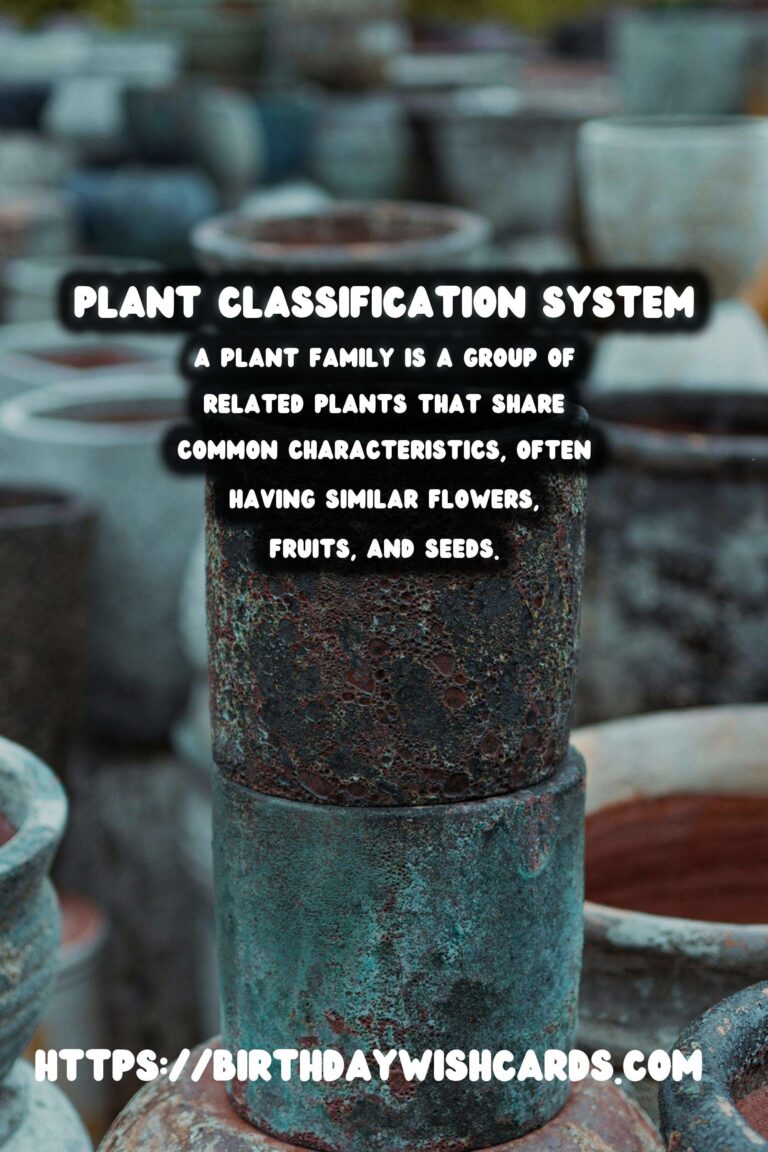
The world of botany is vast and intricate, with a complex system in place to classify the myriad species of plants that populate our planet. At the heart of this system is the classification of plants into families and orders. Understanding how plants are grouped into these categories can enhance our knowledge of plant biology, ecology, and evolution.
What is Plant Classification?
Plant classification is a scientific method used to organize plants into categories based on shared characteristics. This system helps botanists and researchers to identify, study, and understand plant species and their relationships to one another.
Classification is hierarchical, meaning it organizes plants into broader categories before narrowing down to specific species. The hierarchy includes several ranks, namely kingdom, division (or phylum), class, order, family, genus, and species. Each rank narrows the group of plants further, with species being the most specific classification.
Understanding Plant Families
A plant family is a key rank in the hierarchy of biological classification. It is a group of related plants that share common characteristics, often having similar flowers, fruits, and seeds. Families are identified by a standardized suffix, ‘-aceae’, such as Rosaceae (the rose family) or Fabaceae (the legume family).
Plant families can include hundreds or even thousands of species. For instance, the Rosaceae family includes roses, strawberries, and apples, while the Fabaceae family encompasses peas, beans, and lentils. Understanding plant families can aid in recognizing patterns in plant traits and ecological roles.
The Role of Orders in Plant Classification
An order is a higher rank than family, grouping together families that share certain traits. Orders help to further organize the vast diversity of plants into manageable categories. For example, the order Rosales includes the families Rosaceae, Moraceae (the mulberry family), and Urticaceae (the nettle family).
Orders are identified by their own suffix, ‘-ales’, and are crucial in understanding the evolutionary relationships between different plant groups. By studying orders, scientists can track the evolutionary history and development of plant traits over time.
Why is Plant Classification Important?
Understanding plant classification is essential for several reasons:
- Scientific Research: Classification provides a framework for organizing knowledge about plants, making it easier for scientists to communicate and collaborate.
- Conservation Efforts: Knowing the relationships between plants can help identify key species for conservation, especially those that are endangered or play critical roles in ecosystems.
- Agriculture and Horticulture: Plant classification aids in the development of new crops and plant varieties, improving food security and sustainability.
How to Learn More About Plant Classification
To delve deeper into the world of plant classification, consider the following resources and activities:
- Botany Courses: Enroll in botany or plant science courses offered by universities or online platforms.
- Field Guides: Use plant identification guides to practice classifying plants in your local area.
- Herbariums: Visit herbariums or botanical gardens to explore diverse plant families and orders.
By exploring these resources, you can gain a richer understanding of plant biology and the fascinating ways plants are classified.
Plant classification is a scientific method used to organize plants into categories based on shared characteristics. A plant family is a group of related plants that share common characteristics, often having similar flowers, fruits, and seeds. An order is a higher rank than family, grouping together families that share certain traits. Understanding plant classification is essential for scientific research, conservation efforts, and agriculture. To learn more about plant classification, consider botany courses, field guides, and visiting herbariums.
#PlantClassification #Botany #PlantBiology #Ecology #Conservation

